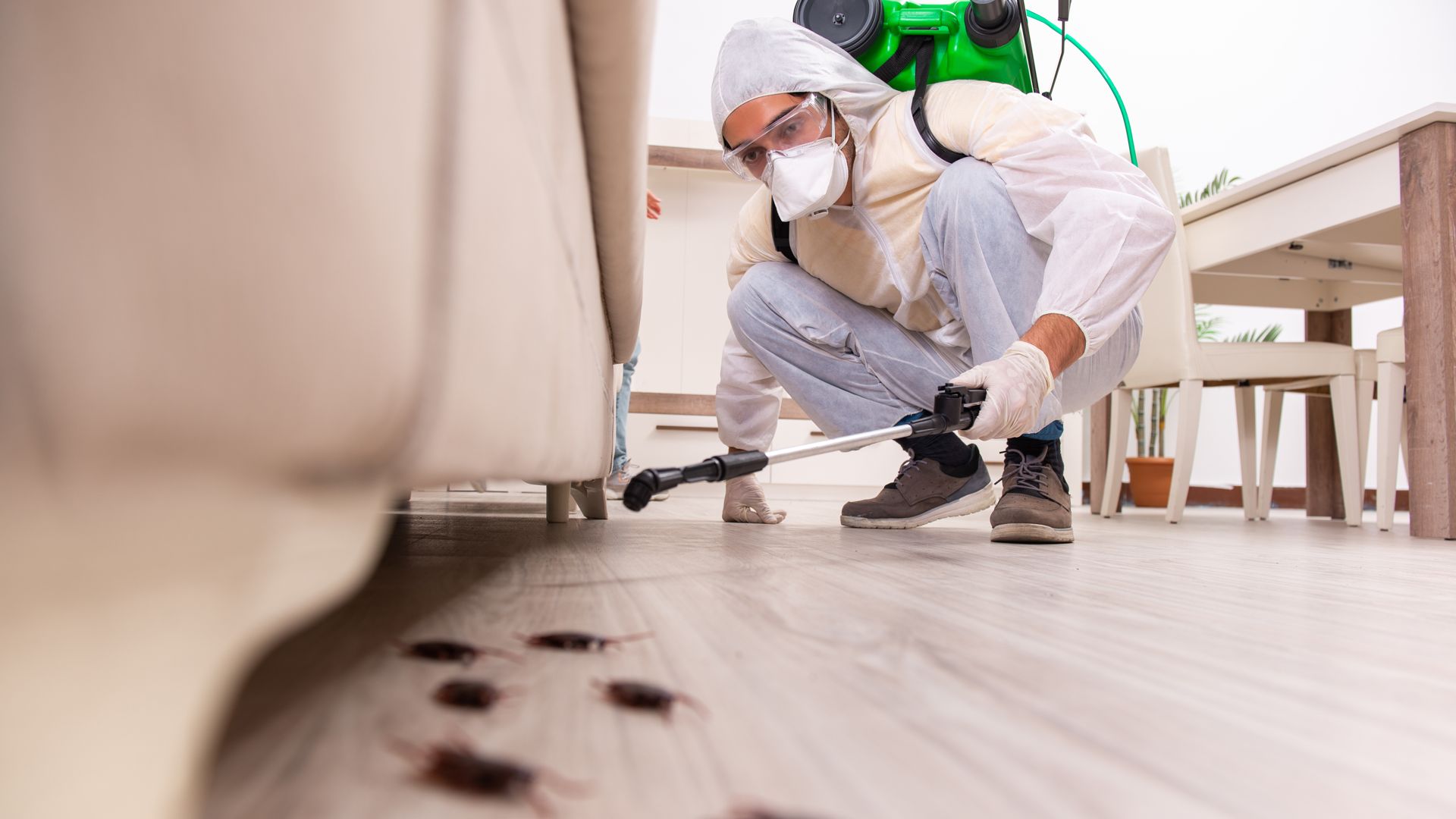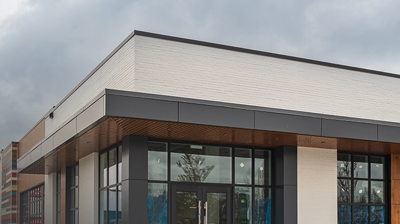
What are termites?
Termites are one of the most destructive pests that homeowners have to deal with. They move into our homes and businesses without our knowledge and work day and night for months or years, feeding on and destroying the wood within. Though they are tiny in size, you can believe the hype that comes with these pests; they are responsible for causing over five billion dollars in damage across the country each year!
In California, we are unlucky enough to regularly deal with not one but two different species of termites, both with descriptive names that tell us a bit about them. Subterranean termites nest in damp soil, preferring to feed on damp, decaying, or otherwise water-damaged wood. They have very high moisture needs. On the other hand, drywood termites have much lower moisture needs and prefer to feed on dry or sound wood; they nest within the wood they are feeding on.
Are termites dangerous?
Termites aren’t pests that directly threaten people, but they are certainly dangerous to our structures. These tiny insects can cause major damage to wooden structures because of their large colonies, ability to work together, and strong chewing mouthparts.
The termite’s primary food source is cellulose; when living outside, this means feeding on fallen trees, tree stumps, leaf litter, and other sources of wood and organic debris. However, inside, they feed on and destroy our home’s structural wood, wood trim, roof rafters, wooden furniture, and antiques.

Why do I have a termite problem?
Termites have become a problem on your property because it offers them a source of food and, in the case of subterranean termites, a source of moisture.
Subterranean Termites
Subterranean termites are attracted to moisture. Things like very wet soil, leaking pipes, and poor basement or crawl space ventilation provide the water these pests are seeking. After being attracted to the exterior of your home by sources of moisture, their main entry points include spaces in the foundation, openings around pipes or cables, or wood trim making direct contact with the damp ground. Subterranean termites don’t travel far from their nests, about 130 feet, so if termites are in your home, a nest is nearby.
Drywood Termites
Drywood termites move into homes in various ways through foundations, vents, gaps around windows and doors, damaged trim, and in or along the roof. They do not require contact with soil because drywood termites get all their required moisture from the wood they live in. If needed, drywood termites will migrate miles to find suitable food and water sources.
Where Are Termites Commonly Found?
It tends to be a bit easier to discover damage caused by drywood termites than by subterranean termites. When drywood termites infest wooden structures or other pieces of wood, they create tiny but visible holes to push their dropping through; the droppings will pile up on the ground and look like coffee grounds.
Subterranean termites can be a bit more difficult to find, as they are usually in the soil or the interior of the wood they're feeding on. The easiest way to identify an infestation by these termites is by finding the mud tubes they create to travel through. They are about the width of a pencil and are found on the ground and running up walls and foundation walls.
Termites swarms are another way to identify a termites infestation. A termite swarm occurs when winged reproductive members “swarm” from a mature colony to find a mate and begin a new colony. Witnessing a swarm of flying termites or seeing piles of their wings indicates that a nest is nearby, and you need to take action to find and eliminate them.
How do I get rid of termites?
In order to protect your property from termite damage, it is best to be proactive and partner with a professional. At HomeShield Pest Control, protecting our customers, their families, and their homes from pests like termites is our top priority. We offer termite inspection and treatment services along with our regular pest control services. If you live in the Sacramento Valley or Southern California area and would like to learn more about working together to protect your home and property from termites, call us today at (888) 720-3618!
How can I prevent termites in the future?
Below are some of our most helpful termite prevention tips to protect your California yard and home from the termites that call our region home.
- Use rain gutters and keep them free of debris to ensure that rainwater is being directed away from your home and not seeping into your roofline or exterior walls.
- Place weatherstripping around windows and doors to keep moisture out of your house.
- Repair cracks or other openings in the foundation, exterior walls, or roofline of your home.
- Keep basements or crawl spaces dry using dehumidifiers.
- Quickly repair leaky pipes or fixtures.
- Clear your yard of wooden construction debris, fallen trees, tree stumps, and woodpiles that termites will want to feed on.
- Paint or stain exposed wood on and in your home.
- Limit soil to wood contact on your property.
- Inspect lumber, landscaping, wood flooring, wooden furniture, and other wooden items before bringing them onto your property or into your house.

Our Pest Control Services
We Provide Reliable Home Pest Control And Commercial Pest Control Solutions.
Why Our Customers Love Us
HomeShield Pest Control received an average rating of 5.0 out of 5 stars from over 8000+ reviews.
-
Homeshield was great to work with!“Homeshield was great to work with! My wife and I encountered a really bad termite problem at our new home during the renovation phase, and needed treatment asap so that renovation could resume. Mike drove all the way down for an inspection, and was very thorough in his explanations. He was able to match a competitor's price for the treatment and locked in a day for the following week. Daniel and Elias, the technicians, were very communicative about their ETA and did a good job explaining their respective roles. All in all, a quick and easy process. Thank you, Homeshield!”- James Y.
-
Pleasant, friendly and respectful.“Bronson announced his arrival and departure. He inquired if there was anything specific that we wanted done prior to him starting his regular service. Pleasant, friendly and respectful.”- Joseph S.
-
Will continue using homeshield!“
Amazing work! Switched from Terminex as I was tired of having scheduling issues and wanted something eco friendly for my dogs and upcoming baby.
”
I definitely recommend trying to get Jose Garcia as your technician as he was very communicative and kept us updated throughout the service process.
Will continue using homeshield!- Chris P.M. -
Humble and helpful. Does what ever we are asking for.“You guys provide very quality service. We are very happy with the service. Every time the person comes to our place to provide service is very humble and helpful. Does what ever we are asking for. Thank you.”- Arif S.
-
Excellent experience. Super professional and thorough“
Excellent experience. Super professional and thorough. Found them through yelp and they called immediately with affordable options and set up an appointment. The technician was wonderful. Would highly recommend.
”- Samantha S. -
Quote came within minutes and price was very reasonable.“
Dee provided a very thorough and detailed inspection. Walked us through the entire process and what we could expect throughout the initial services and beyond. Quote came within minutes and price was very reasonable.
”- Jason D. -
Ben was FANTASTIC“
Ben was FANTASTIC in every way, He came to give me an estimate on my home, was on time, polite, knowledgeable, and extremely professional in how he handled everything. Had 4 other termite co. to give me an estimate, not even close to Ben's expertise, I would give him a 10 if I could. Will definitely use him in all my other projects , they are a lot since I am in real estate and have many clients.
”- Judy M. -
Victor, was very professional, helpful and informative.“
We had a great experience. They were able to work with our schedule to make a quick appointment. The service professional, Victor, was very professional, helpful and informative.
”- Mark S.

Featured On










.svg.2405150737550.png)





